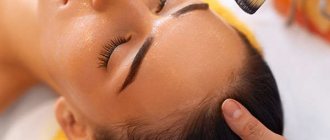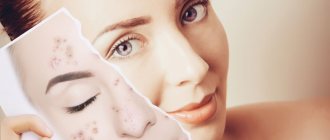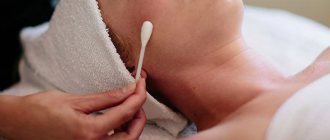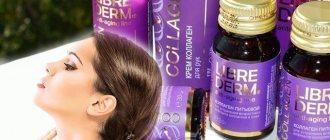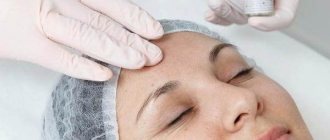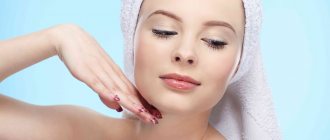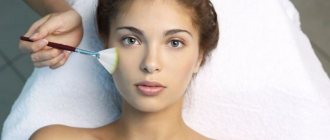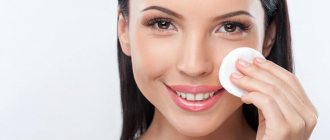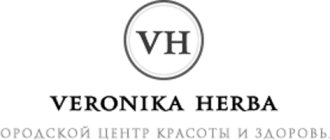Yulia Prokopenko, leading technologist-expert
educational
Expert opinion
Firm, healthy, glowing skin is the main beauty trend. And for a well-groomed appearance, constant care is important. In addition to daily beauty rituals, the skin periodically needs more active treatment. We'll tell you what cosmetic procedures can be done at any time of the year and how to perform them correctly so as not to harm the skin.
Yulia Prokopenko, leading technologist-expert
educational
The benefits of regular intensive care
Our skin consists of several layers. The top layer, the epidermis, is constantly renewed: dead cells are exfoliated and replaced by young ones. It is on this systemic “circulation” that youth and healthy skin depend. With age and under the influence of other factors, the process of cell renewal slows down. As a result, the complexion becomes dull, pores become clogged, and the skin looks uneven. Peels can prevent such problems.
Enzyme peeling Papaya Enzyme Peel, 150 ml
Peeling with lactic acid Lactica Exfoliate, 150 ml
Regenerating Azelaic peeling with azelaic acid, 150 ml
Regular exfoliation helps not only to cleanse the skin of the keratinized layer of cells, but also to cope with the effects of acne, blackheads, age spots, and make scars less noticeable. With a systematic approach, peeling fights the first signs of aging and corrects existing ones: smoothes the skin, eliminates facial wrinkles, improves complexion, makes the skin more hydrated and smooth.
Which peeling to choose for age spots
The choice of peeling depends on the depth of the pigment spots. There are 3 types of pigmentation depending on the depth of the pigment:
1. Epidermal type or superficial
- Most common type
- The initial stage of pigmentation, during photoaging
- Distinctive features: located in the upper layers of the skin, has clear boundaries, is easier to correct
2. Dermal type or deep
- Less common, associated with congenital disorders
- Has blurred borders and blue-black color
3. Mixed type (epidermal-dermal)
- Second most common
- Often a continuation of the epidermal type, long-existing and difficult to correct spots
- Distinctive features: blurred boundaries of spots
Only knowing the depth of pigmentation can you choose the most effective peeling for age spots!
How to choose the right product
In order for peeling to be beneficial, not to aggravate existing problems and not to provoke new ones, it is important to choose the right means for its implementation.
- Almond and milk peelings will help make dry skin more hydrated and eliminate flaking. Such procedures will improve the condition of sensitive skin.
- Peels with glycolic and salicylic acids regulate sebum production and reduce inflammation, so they are perfect for oily skin types.
- Peels with lactic and salicylic acids will help to cope with the problems of combination skin (reduce oiliness in the T-zone, moisturize dry areas).
It is important to understand that peeling refers to professional care. An experienced specialist can perform the procedure safely and effectively. You also need to take into account that peeling is primarily a seasonal (autumn/winter) procedure. But science does not stand still, and today there are home peelings that, after consultation with a cosmetologist, can be used independently at any time of the year.
Where does ferulic acid come from?
The main component of the composition for this type of peeling is ferulic acid. It belongs to fruit acids and is isolated from the ferula plant.
It is also found in grains, coffee, nuts, citrus fruits, and many fruits and vegetables, which help preserve the cell membrane and protect from the sun.
For cosmetic purposes, ferulic acid is usually not used in its pure form. It is often mixed with other acids or vitamins, for example: vitamins E or C, hyaluronic, mandelic, lactic or malic acids.
All-season intensive care products ARAVIA Professional
The ARAVIA Professional line includes all-season peels for both salon use (for example, ANY-Time Control peeling gel or Carbonic Peel Program carbon peeling complex) and for home use.
Let's take a closer look at peelings that can be used independently at any time of the year:
- peeling with lactic acid Lactica Exfoliate 10% not only deeply cleanses, but also regulates the functioning of the sebaceous glands, moisturizes and brightens the skin. The product copes with the imperfections of sensitive, dry skin and problematic oily skin. Peeling promotes renewal of epidermal cells, improves microcirculation, stimulates the formation of collagen and glycosaminoglycans;
- regenerating peeling with azelaic acid Regenerating Azelaic has an intense antimicrobial and anti-inflammatory effect. The product, due to the content of azelaic acid and a complex of AHA acids, reduces sebum production, moisturizes the skin, eliminates hyperkeratosis, and reduces the severity of age spots. Peeling effectively copes with oily skin problems, but can be used for any type;
- enzyme peeling Papaya Enzyme Peel cleanses the skin of impurities and sebum, reduces the severity of pigmentation, has a regenerating and anti-inflammatory effect, and fights hyperkeratosis. The product can be used for any skin type, including sensitive skin with signs of rosacea.
Benefits of using peeling for pigmentation
They accelerate the appearance of normally colored cells on the surface of the skin, thus speeding up the process of getting rid of pigmentation.
- Accelerates cellular renewal and exfoliation
- Allows you to quickly get rid of age spots
- The correct composition suppresses excess activity of melanocytes (lightens problem areas of the skin)
The leading advantage of peelings is that there is no need to apply an exfoliating composition every day; it is enough to visit a cosmetologist once every 2 weeks. If it is not possible to visit a cosmetologist, you need to use home peeling products.
New items! All-season peelings ARAVIA Laboratories
Especially for the spring update, two all-season facial peels have appeared in the ARAVIA Laboratories line, which can be used independently at home. Peeling for radiance of the skin with a complex of acids 10% Shining Skin Peeling
The product deeply renews the skin: delicately exfoliates, makes the skin tone smoother and improves tone, fights the first signs of aging. The product contains three active acids:
- ferulic acid has an active antioxidant effect, activates the production of elastin and collagen, moisturizes and fills the skin with oxygen;
- malic acid eliminates dead skin cells, tightens pores, whitens and lightens age spots;
- citric acid effectively brightens the skin, tones, improves acid-base balance, fills the skin with antioxidants and reduces inflammation.
The peeling also contains peony extract, which eliminates redness, reduces the appearance of age spots, and has an antioxidant effect.
ARAVIA Laboratories peelings for skin elasticity and radiance
Peeling for skin elasticity with AHA and PHA acids 15% Anti-Age Peeling
The product delicately renews the epidermis, reduces wrinkles, evens out skin texture, giving it elasticity and firmness. The active anti-aging effect is achieved thanks to the action of five acids at once:
- lactic acid moisturizes, gently exfoliates the stratum corneum of the skin, brightens and refreshes the complexion;
- glycolic acid promotes collagen production, deeply cleanses and exfoliates dead cells, evens out the relief, reducing the visibility of scars and post-acne marks;
- tartaric acid has a pronounced anti-aging effect, stimulates cell renewal and reduces the appearance of wrinkles;
- malic acid evens out tone, relieves inflammation, tightens pores, activates cell renewal, gives skin elasticity;
- Gluconic PHA acid has an antioxidant effect, makes wrinkles less noticeable, moisturizes and tightens the skin.
Peeling also contains collagen and arginine, which make the skin more elastic and smooth, retain moisture in cells, activate blood circulation and improve the condition of damaged epidermis.
How does ferulic acid affect the skin?
Acid stimulates the production of collagen and melanin in the skin, increases blood circulation in capillaries, feeding cells with oxygen and strengthening cellular structure.
Ferulic acid is also a natural antioxidant that has antibacterial, antiviral and depigmenting properties.
Unlike other types of chemical peeling, ferulic peeling is much gentler and painless. After the procedure there are no unpleasant consequences: burning, swelling, peeling, crusting, and the effect lasts quite a long time.
How to use peelings correctly
In order for the procedure to be effective and not have negative consequences, skin peeling must be performed strictly according to the protocol. As a rule, recommendations for use are indicated in the instructions for each drug.
The general protocol for the peeling procedure looks like this:
- Thoroughly cleanse the skin of cosmetics and impurities.
- Apply the peeling mixture evenly to dry skin.
- Keep the drug for the specified time.
- Rinse with water.
- Apply a soothing or restorative mask, then use toner, serum, cream.
The process of applying peeling with a special brush
The brush distributes the product evenly over the skin
It is important to understand that during peeling not only the stratum corneum of the skin is removed, but also living cells are affected. And you need to be prepared for certain reactions of the body in response to such an active influence.
The predicted consequences of the procedure include:
- mild itching;
- redness of the treated area;
- peeling;
- formation of protective crusts;
- swelling.
This is an expected reaction of the body, which goes away 3-4 days after the procedure.
But there is a risk of developing more dangerous unpredictable complications that will require long-term treatment and recovery. These conditions include:
- persistent (resistant) erythema;
- allergic reaction;
- exacerbation of herpes;
- tissue inflammation with redness, soreness, swelling;
- marbling of the skin;
- demarcation line;
- active formation of acne;
- keloid and hypertrophic scars;
- hyperpigmentation.
In order not to encounter such serious reactions of the body, it is important to perform the procedure correctly, following all the specialist’s recommendations, including subsequent care.
Chemical peeling: pros and cons
Peelings are now at the peak of popularity. In modern cosmetology, side effects are minimized, and consumers are fully informed about the procedure and the mechanism of action of acids. Samantha, the heroine of the TV series Sex and the City, with her face the color of ripe cherry, burnt after peeling, is becoming a thing of the past. As a result, only children are not taken to a beauty salon for peeling. Can acids really stop aging?
An excursion into history: when and where it all began
The concept of skin photoaging was developed in the 90s. It was then that scientists identified to the broad masses the main source of all troubles. According to this theory, almost all age-related changes - wrinkles, rosacea, pigmentation - occur due to damage caused by UV radiation and can be corrected if caught in time. The main weapons of the fight are acid peels, antioxidants (another magic word) and, of course, sunscreens.
The cosmetic market responded to the scientists' statements in the same way as always - offering a great variety of new products and procedures. This is how salon peelings, home peelings, serums with various concentrations of antioxidants and prices from 10 to 500 dollars, creams with AHA and BHA acids, sunscreens with nanoparticles and the absence of whitening effects appeared. New theories have also emerged that promise that nutritional supplements will prolong youth and beauty.
And yet, it is peelings that have become the most popular and most in-demand procedure among cosmetologists, in dermatological clinics and at home.
Chemical peels actually date back to ancient Egypt. The Egyptians successfully used lactic and fruit acids for this purpose. It is known for certain that Cleopatra took baths in sour milk and, without realizing it, was “peeled” with lactic acid. Her legacy did not sink into oblivion, but developed and improved. In 1882, salicylic acid, resorcinol and phenol began to be used in Europe. In 1930, peelings came to the United States thanks to Antoinette La Gosse, and from there, as they say, it went from there. Her protégé Cora Galenti made a fortune in Florida practicing wrinkle-smoothing peels.
In other words, controlled skin damage has a long history. Controlled, because that's what chemical peels are all about: using a combination of acidic agents to remove specific layers of skin. By varying the depth of exposure, it is possible to stimulate recovery processes, i.e., increase the production of hyaluronic acid, collagen and elastin, proteins that create a framework for maintaining skin elasticity.
Myths about peeling
Despite the large amount of reliable information explaining the actions and capabilities of peelings, some outdated beliefs and myths still persist. Consider them in order:
- The stronger the better.
“70% peeling with monoacid is better than 30%” - such reviews can often be found in various blogs. However, all aggressive exfoliation really does is strip away your skin and make the healing process more difficult. Doing this is not always the best solution. Modern peels combine several exfoliating acids - glycolic, lactic, azelaic, ferulic, phytic, etc. In addition, the composition often includes citrus extracts and vitamins, for example, retinol (vitamin A), antioxidants (most often resveratrol, genistein and vitamin E), as well as soothing agents (fireweed or aloe) to prevent irritation and redness. The practice has emerged of introducing detox agents and substances that stimulate microcirculation, such as coconut charcoal, into peelings. By reducing the concentration of each acid, combining several substances in one product, we get the maximum effect from each of the acids, while minimizing side effects - redness, burning, peeling. The composition of modern peelings enhances the penetration of antioxidants and vitamins included in the formula into the living layers of the skin. - Peeling
is a sign of peeling effectiveness. This is the most amazing misconception. Clients have repeatedly caused my cosmetologist friends to exclaim, “Oh my God, they want me to rip their skin off?!” Today, when developing peeling systems, along with efficiency, manufacturers are required to ensure maximum safety of the product and minimize side effects. The skin does not have to be “torn off”. There are systems that dissolve dead epidermal cells, usually these are “acid hybrids,” i.e., combinations of various acids, vitamins and antioxidants. The small size of the particles allows them to penetrate deep into the skin (act at the microscopic level). You have complete control over the process of removing damaged skin, smoothing its microrelief, brightening, moisturizing, smoothing wrinkles and restoring elasticity. The most commonly used combinations are retinol, encapsulated glycolic and lactic acids (15% glycolic + 5% lactic) or polyhydroxy acids. An example is gluconolactone; its acidic group is “masked” in the ring structure of the molecule, so it does not cause irritation when it comes into contact with the skin. These peels can be applied to the arms, neck and décolleté. They are suitable for even the most sensitive skin. In addition to improving peeling compositions, the procedures themselves are also being improved. Modern peeling consists of at least three standard blocks: skin preparation, peeling itself and completion of the procedure, which, depending on the needs of the skin, includes soothing gels, masks, and protection from UV radiation. Such procedures may include the alternate application of 5 to 10 drugs; the specialist builds an almost individual program. After completion, you do not see irritation and redness, but there is a positive trend that will intensify over the course of several months. - “Wounds” must take a long time to heal.
This point echoes the previous one, but here we are talking about medium and deep peels, which damage the basal layer of skin and dermis (located between the deepest layer of skin, subcutaneous fatty tissue and epidermis - the outer layer of skin). Of course, it is almost impossible to avoid side effects with medium and deep peels. One way or another, “wounds” form, you feel pain and burning, which can persist for several days or weeks. During the rehabilitation period, it is recommended to apply healing agents such as Panthenol, and in some cases antibiotic ointments. Crusts form on the face, it swells, then the skin cracks and comes off in layers. Thank God, all these horrors are already in the past. Products from modern manufacturers minimize discomfort during peeling and speed up the healing process after the procedure, while maximizing its overall effectiveness. For example, the most traumatic trichloroacetic acid (TCA - the “gold standard” of chemical peels) is today combined with phytic or glycolic acids. As a result, although “crusts” are still present after the procedure, they disappear much faster. In 3-4 days you will be able to lead your normal life, as opposed to 2-3 weeks with a traditional TCA peel. And the procedure itself is much easier than when applying pure acid. Many brands today include a modulator - a system of anti-inflammatory substances and antioxidants with a higher pH, this allows you to regulate the depth and area of peeling, and suppresses inflammatory reactions. Peels of this level are not necessary for everyone; they have previously been associated with certain risks, such as scarring and hyperpigmentation. Today, in order to increase the safety of the procedure and reduce the risks of complications, drugs with antioxidant protection are used at all levels. Special care at home is required, but thanks to the advent of cosmeceuticals, it is not difficult for a specialist to choose the right care.
If you think deep peeling will make you 10 years younger, it won't. Let's say you are 45, after peeling you will still look like a 45-year-old woman, but only fresh and well-groomed, rested and radiant.
- Only one procedure is needed.
In fact, the number of sessions is selected individually depending on the problems that need to be solved. For example, acne treatment often extends over many months and requires repeating the procedure every 2-3 weeks. Medium and deep peels can be performed once. It is commonly said that superficial peeling requires 7–10 sessions, but this is very arbitrary. Today there are systems that give visible results after the first use. Next, the client decides for himself whether he needs to consolidate the result; in this case, at least 5 procedures will be required. - There is no need to spend money on cosmetologists; chemical peeling can be done at home.
Rhonda Allison, founder and CEO of Rhonda Allison Clinical Enterprises, calls peeling an art form and argues that understanding and skill grows with experience—the more experienced the practitioner, the better the procedure and the better results you will receive. A full-fledged chemical peeling, even a superficial one, cannot be done at home, unless, of course, you are a cosmetologist-esthetician and have not been trained at a training center. All professional brands provide mandatory training. However, this does not mean that you cannot do anything at all. Products with a pH of at least 4.0 are allowed for home use. Basically, such products are classified as “preparation” for peeling. There are plenty of serums with fruit acids or combinations of acids - most with glycolic as the most popular on the market. These products are effective for exfoliating the uppermost scales of the stratum corneum and moisturizing - you should not expect miracles from home remedies. Another type of home peeling is enzyme peeling. They are able to dissolve dead skin cells, giving it a healthy, radiant appearance.
Chemical peels are experiencing a renaissance these days. The products are constantly being improved - burns, itching, and irritation with superficial peels are no longer a problem. Today it is a simple and safe cosmetic procedure that can help eliminate the signs of photoaging and partially correct the effects of biological aging.
The sooner you start using gentle peels, the better your skin will feel as you move into older age group. Preventing aging from the age of 20 will allow you to subsequently avoid many procedures. Regular gentle exposure of the skin to acids ultimately provides a lasting preventive effect. If deep wrinkles and nasolabial folds have already appeared, then even the deepest peeling will not give the effect that you would like to see.
Tatiana Morrison
Photo thinkstockphotos.com
Home care after intensive procedures
During the post-peeling period, the skin needs special care. After intensive procedures, caring masks will have a good effect. The ARAVIA Professional line includes a series of express masks with various effects: detoxifying, revitalizing, anti-aging, restoring, and for skin radiance.
Maximum attention should be paid to comprehensive skin hydration and powerful ultraviolet protection even in cloudy weather.
Splash serums for the face with a lifting effect Revita Serum and boto-effect Boto Drops provide skin care after active exposure and prolong the effect of intensive procedures: protect against photoaging and age-related changes, reduce the appearance of wrinkles and the severity of enlarged pores, even out the relief and fight against hyperpigmentation.
Daily hydration and protection of the skin will be provided by OIL- and DRY-Control Hydrator creams from the ARAVIA Professional Intensive Care series. These products not only moisturize, but have an active complex effect: restore the epidermal barrier, reduce inflammation, protect and improve skin quality.
OIL- and DRY-Control Hydrator creams provide intensive care for different skin types
To protect renewed skin from the formation of age spots, home care must include the use of products with SPF filters. An excellent choice would be the SPF-40 Sun Shade moisturizing fluid. The product not only protects the skin from ultraviolet radiation, but also fills it with B vitamins and microelements, has a restorative effect, and prevents transepidermal moisture loss.
Protocol for the procedure in the salon
Ferulic peeling does not require any serious preparation; it is enough to spend less time in the sun a week before visiting a cosmetologist, and give up cosmetics 2 days before.
In the salon, before the session, the cosmetologist is obliged to identify contraindications and warn about side effects, only after this the procedure is carried out in the following sequence:
- Cleaning;
- Degreasing;
- Application of a protective agent;
- Apply the base composition with ferulic acid and leave for 5 to 15 minutes. The cosmetologist monitors the condition of the skin and can reduce or add time;
- Rinsing off the peeling mixture;
- Applying a soothing mask;
- In summer, cream with UV filters is added.
The procedure lasts no more than half an hour. It is performed without anesthesia. The course consists of 7 sessions, once a week.
Contraindications
Despite the fact that all-season peeling can be performed without restrictions on the time of year, it is important to take into account the body conditions and diseases in which intensive effects on the skin are contraindicated.
These include:
- disorders of the cardiovascular system;
- diabetes;
- epilepsy;
- chronic skin diseases;
- infectious diseases;
- intolerance to peeling components;
- skin damage;
- taking hormonal medications;
- insolation;
- acute condition: fever, sore throat, cough, etc.;
- pregnancy and lactation - it is permissible to use soft peels, for example, enzyme peels.
All-season peeling is an effective way to keep your skin beautiful and healthy at any time of the year. But the procedure will only be beneficial if it is done correctly, taking into account many nuances. To ensure you are pleased with the result, before performing peeling, be sure to consult with an experienced cosmetologist and follow his recommendations.
Recovery
What is especially pleasing about ferul peeling is that there is practically no recovery period. It lasts only 2 hours after visiting a cosmetologist and does not lead to uncomfortable consequences - peeling and crusts on the face. This means you can safely leave the house the next day.
But still, during the course you need to use sunscreen and moisturizers (especially in the summer), and also minimize skin irritation, that is, limit contact with water, decorative cosmetics, scrubs, and do not rub or scratch your face.
Important! If a film or crust appears on the face (this happens rarely, but still) you should under no circumstances peel it off; it should come off on its own.
Ferulic peeling at home
Not everyone has enough time and money to attend an entire course in a salon. Many people wonder if it is possible to carry out the procedure at home.
Fortunately, unlike more aggressive peelings, which cosmetologists absolutely do not recommend doing on your own, ferulic acid-based peeling can be done at home.
Recipes for ferul peeling mixture
In principle, homemade recipes usually differ only in minor additives - vitamins and acids, which will help the main acid penetrate the surface layer of the skin.
As auxiliary agents, you can add retinol, vitamins C or E, mandelic, lactic acid - they can be bought in professional cosmetic stores or in a pharmacy.
- For almond-ferulic peeling, mandelic acid 35% and ferulic acid 5% are taken;
- For a mixture with retinol, you should buy retinol ointment and ferulic acid 12% from the pharmacy;
- The vitamin E mask uses ferulic acid 12% and vitamin E;
- Peeling with vitamin C requires ascorbic acid - 3-4 tablets and ferulic acid 12%. Ascorbic acid should be crushed into powder and water added to obtain a cream consistency.
General rules
- First, ferulic acid is applied in 2 layers for 2 minutes for dry skin, for oily skin the number of layers increases to 4.
- Then a layer of auxiliary agent is added for 2 minutes.
- All layers of the mask are secured with a layer of aloe gel.
It is better to make the mask in the evening, since the product is left on the skin for up to 12 hours, during which time it should not be exposed to sunlight. After this time, the mixture is removed with plain water. Next, apply any moisturizing mask and sunscreen.
Ferulic acid peeling preparations
Another option, rather than making the composition yourself and almost at random, is to buy a ready-made mixture.
The cosmetic products market now offers a variety of products based on ferulic acid, the differences between them are in different excipients, price range and acid concentration.
Top three most popular products
- Bielita. All-season peeling with ferulic acid. Popular due to its price - no more than 200 rubles. Very gentle on the skin. When used correctly, it will not cause irritation or peeling. The best thing for young skin without any problems.
- Biomatrix. Ferulin 35%. Contains mandelic and ferulic acid. A higher price category is about 1.5 thousand rubles. Has a gel structure. Recommends itself as an exfoliating and cleansing agent. Use carefully, strictly following the instructions. Suitable age: 30+.
- Stella Marina. FeRuLact 12 pH 2.1. Ferulic peeling with the addition of lactic acid. An expensive drug - the price can reach 4.5 thousand rubles. Promises rejuvenation, tone improvement, exfoliation and cleansing. Suitable for skin with problems - post-acne, fine wrinkles, age spots.
